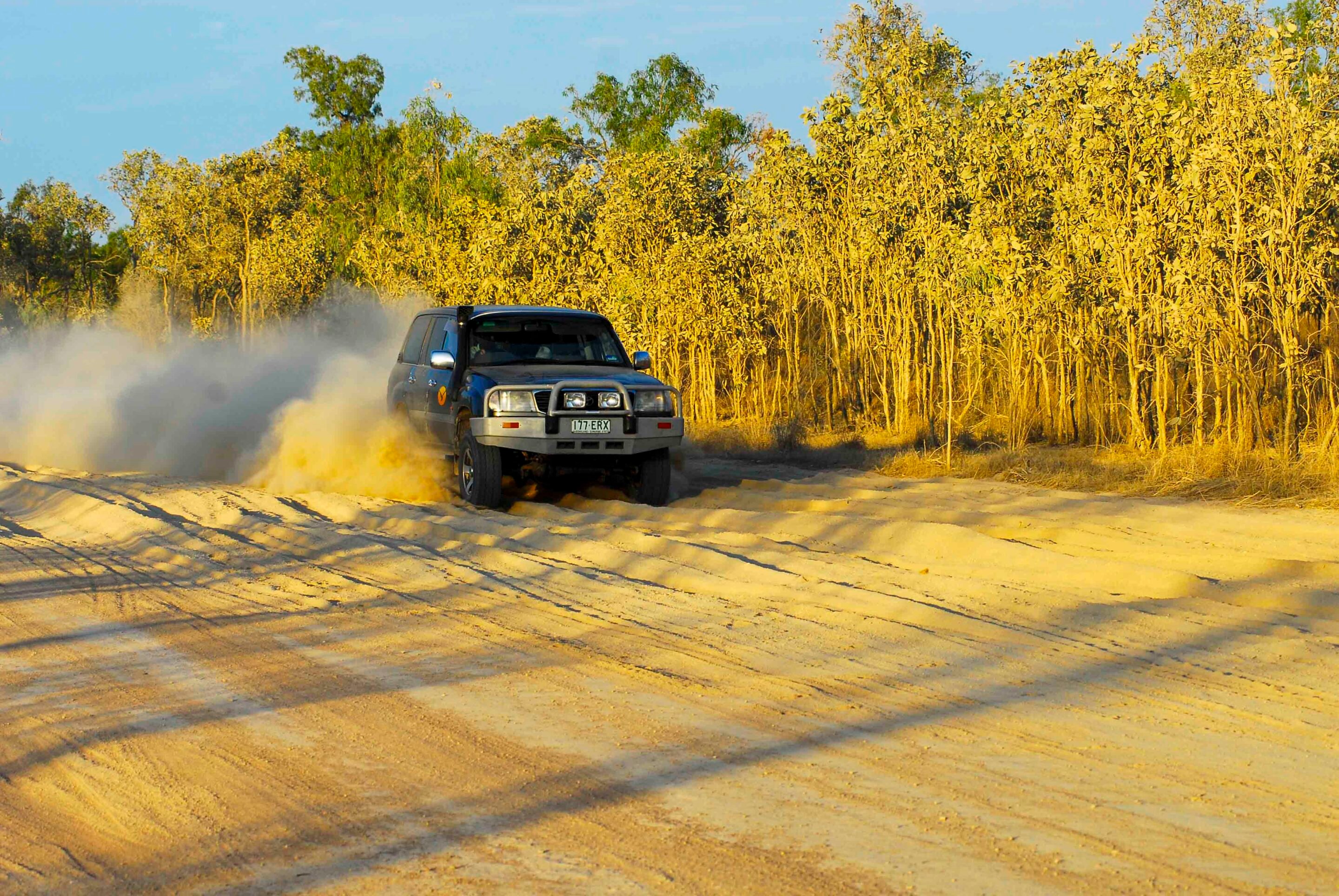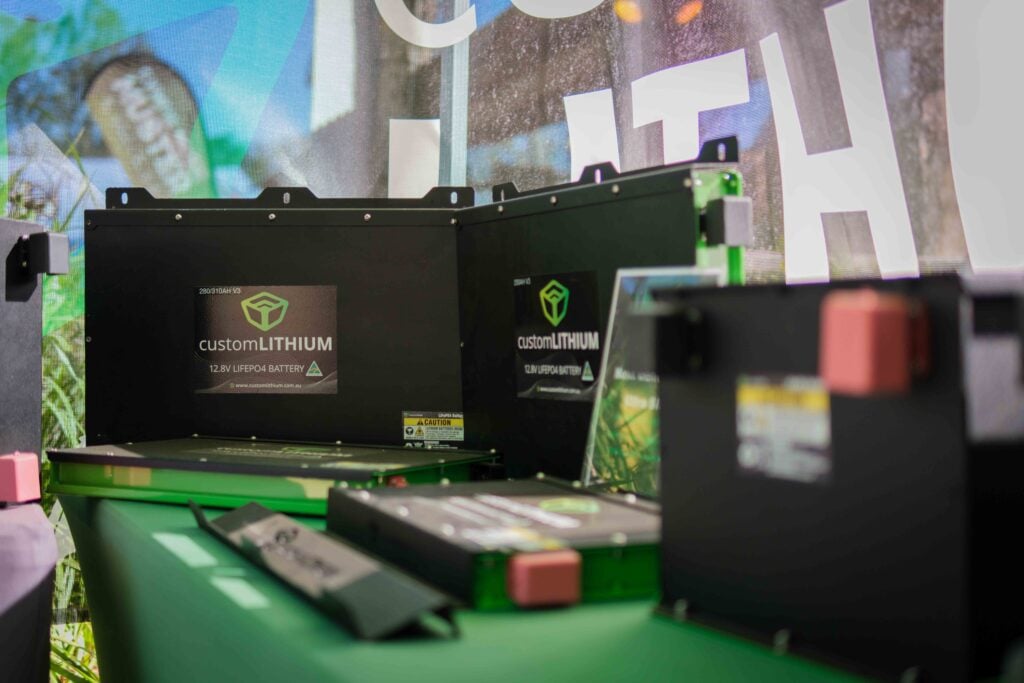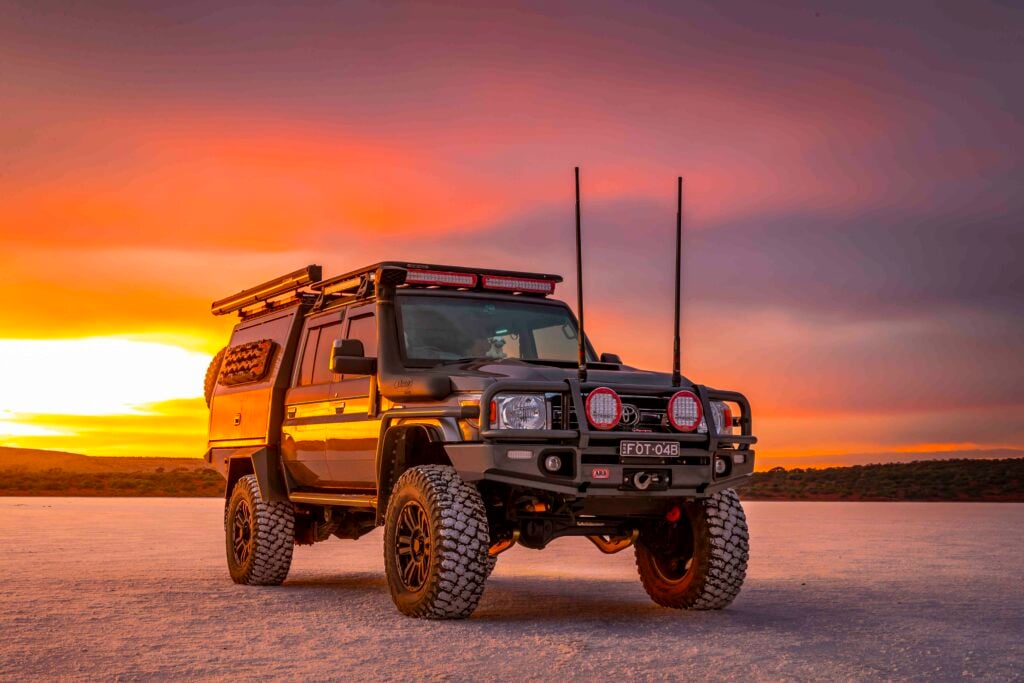All too often we hear folks talking about their new 4×4 and say it will mainly see on-road use with maybe an easy beach drive on occasion.
It’s as if driving on a beach is easy but, in reality, you’re more likely to get bogged in sand than in any other off-road conditions, and you’re more likely to lose that new 4×4 to an incoming tide than from some off-road incident out in the bush.
I love heading out bush, even on short trips to a mate’s place to boil the billy or pass Lakelands, south of Cooktown, to cast lures for barra and sooty grunters in the Laur and Normanby rivers. But it’s the country north of Cooktown on the Starkey Track where offroad adventure begins, sand dunes and rutted sandy and windy bulldust tracks that terminate at amazing fishing spots.
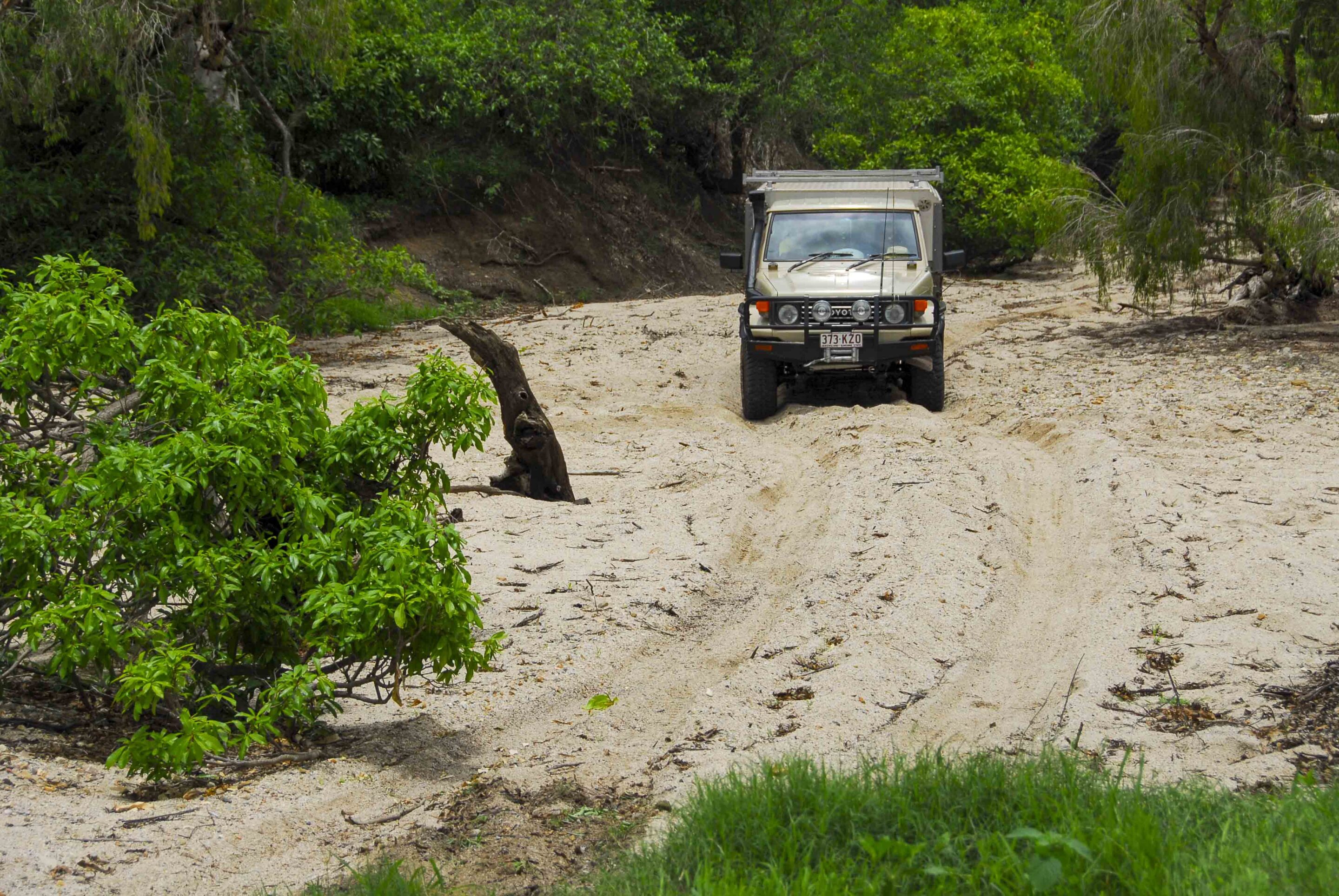
It’s in my front yard as I live in Mareeba, the gateway to the Cape and the Northern Gulf. A mate and I often go on a day trip by getting an early start, though mostly we make the most of the escape and camp for a night or more, sitting around a friendly campfire under a starry sky, listening to howling dingoes.
But a trip can go wrong in seconds unless one is aware and prepared for the pitfalls, bogs, slashed tyres and other unforeseen events. It’s all about preparation and driving to the conditions, something I have been doing for decades in my quest for adventures. Allow me to provide you with some handy bush-driving skills that have been part of my life.
Beaches and dunes
We all tend to drive overloaded vehicles. I run the Toyo A/T tyres on my HiLux at 40psi on bitumen and 36psi on hard dirt roads, but let them down to 12psi on sand dunes. Corrugated roads are best done at 30psi.
When driving in soft sand, highly inflated tyres will get you bogged before you get started and while some drivers reckon that wide tyres are better they actually push up more sand in front of the tyres and increase the risk of sticks and stones damaging bulging sidewalls. Don’t be fooled that tyres with low air pressures will ‘roll’ over obstacles without being damaged because they ‘flex’ better; the vulnerable sidewalls are exposed at low pressures.
Setting the correct tyre pressure will depend on the weight of the vehicle and the terrain. Some sand, especially on damp beaches, tends to be hard. Always drive on the tidal section of a beach, not on the soft sand above it, because that is where birds and turtles lay their eggs.
Soft sand will bog a 4×4, but getting stuck can be largely avoided by lowering tyre pressures down to 16psi or lower. Deflated tyres can roll off the rims when cornering or from hitting an obstacle, so slow down to crawl-speed to avoid popping a tyre off the rim. If you have a flat on a beach, changing the wheel on an incoming tide is risky. Drive as high as possible above the high tide mark when doing so.
The headlands of many beaches are rocky and driving on aired-down tyres could result in a shredded sidewall from sharp rocks. Even smooth rocks can cause tyre damage. It’s wise to pump tyres up on long rocky beach sections to minimise the chance of sidewall damage.
Many beaches have springs and running creeks that wash out deep holes. If you happen to run into one it can be hard yakka getting your 4×4 out. I know a former commercial fisherman who lost his trayback when he ran into a spring hole on a beach north of Pormpuraaw – the vehicle has now rusted away…
Dunes are tricky and often too steep to traverse because of fine deep sand. Wide, aired-down tyres and speed are best for dunes, but be slow on the crest if you don’t know what is on the other side of it. Drive over one too fast and you may launch into space. Be careful on unstable slopes, especially if the vehicle loses traction and drifts down it, trapped in a fine sand avalanche. Trying to turn when this happens may result in a roll over on a steep slope. Be careful braking; instead, let the natural friction of the sand and its suction to control stops.
Bush tracks
The bush tracks through monsoon woodlands turn from corrugation in the early stages of the dry season to bulldust or heavy sand at the end of it. The bulldust is very capable of dry bogging vehicles. When traversing such tracks it’s best to air down to half the pressure of your sealed-road pressures.
Unlike beach driving, it’s impossible to get any speed up on winding, timber-lined and sandy bush tracks. Use low range, third gear when conditions demand it. The problem is that sand sucks tyres in; just stop to see how it piles up about the wheels. This increases drag and the wider the foot print the more drag. Speed will get you through most patches, but as bush tracks often have deep potholes and washouts, take care when doing so.
If you don’t air down you can get dry bogged in this stuff when your vehicle progressively slows down and runs out of power. I have aired-down and still got bogged down because I was towing a heavy boat trailer. You must lower trailer tyre pressure also.
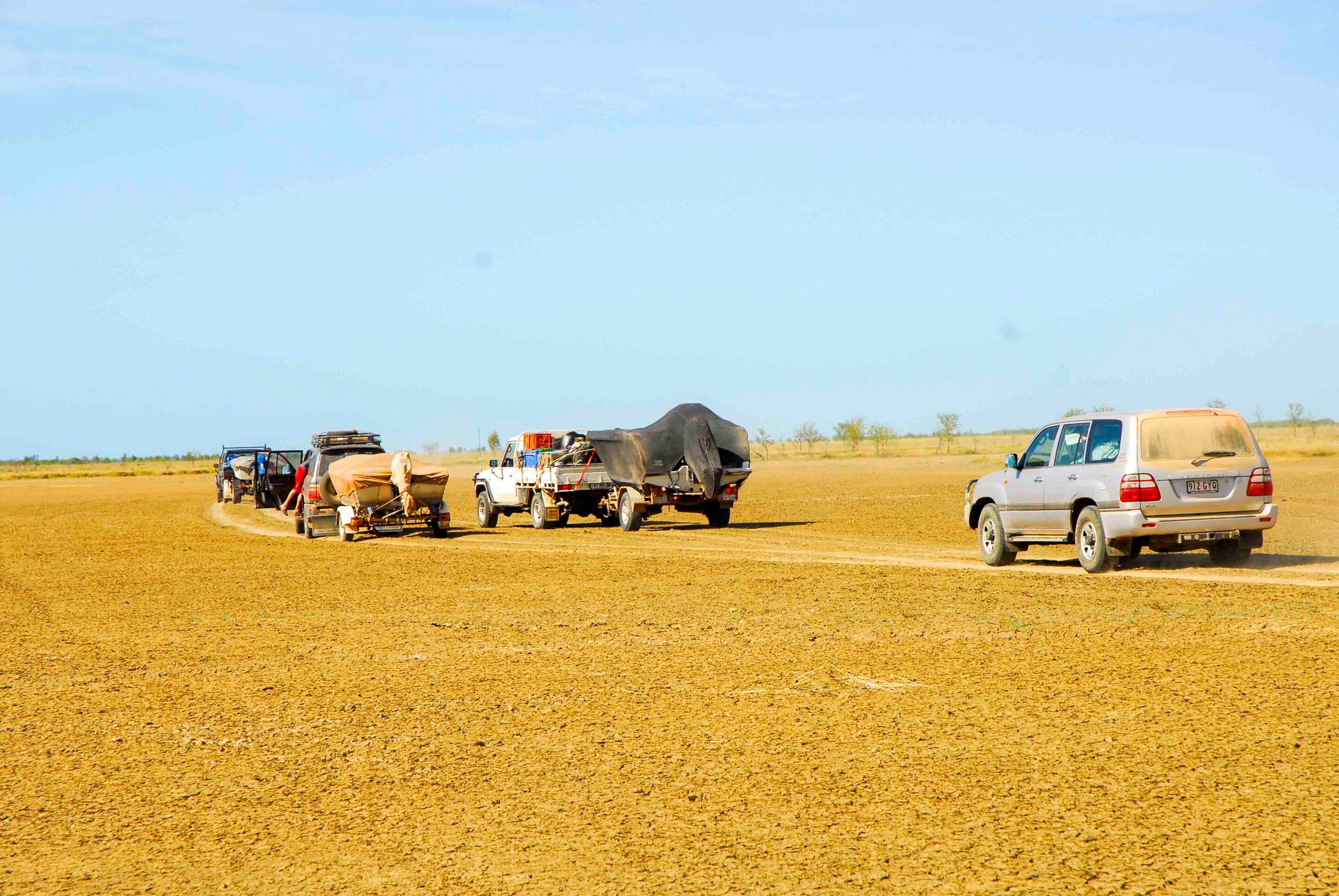
Avoid using the brakes and rely on the gears. Lock auto transmissions in the preferred gear and mode before entering sandy sections, not after you are bogged and need a winch or the recovery boards to get you out.
Bulldust worries newcomers, but it won’t bog you unless you hit a deep hole and are hung up with the vehicle sitting firm and flush on the hard centre and the wheels unable to grip on a soft bottom. It’s rare but it happens, especially after a road train convoy has gone over it. The fine talcum-powder-like dust penetrates everything; a good reason to turn up the aircon to full bore when entering a long stretch. Use the windscreen wipers when it splashes over the bonnet… and it will.
Something to remember is that as with the sand on beaches and dunes, bulldust is firmer in the morning, or when damp from a shower. The same applies to beach sand which is best driven over on a receding tide.
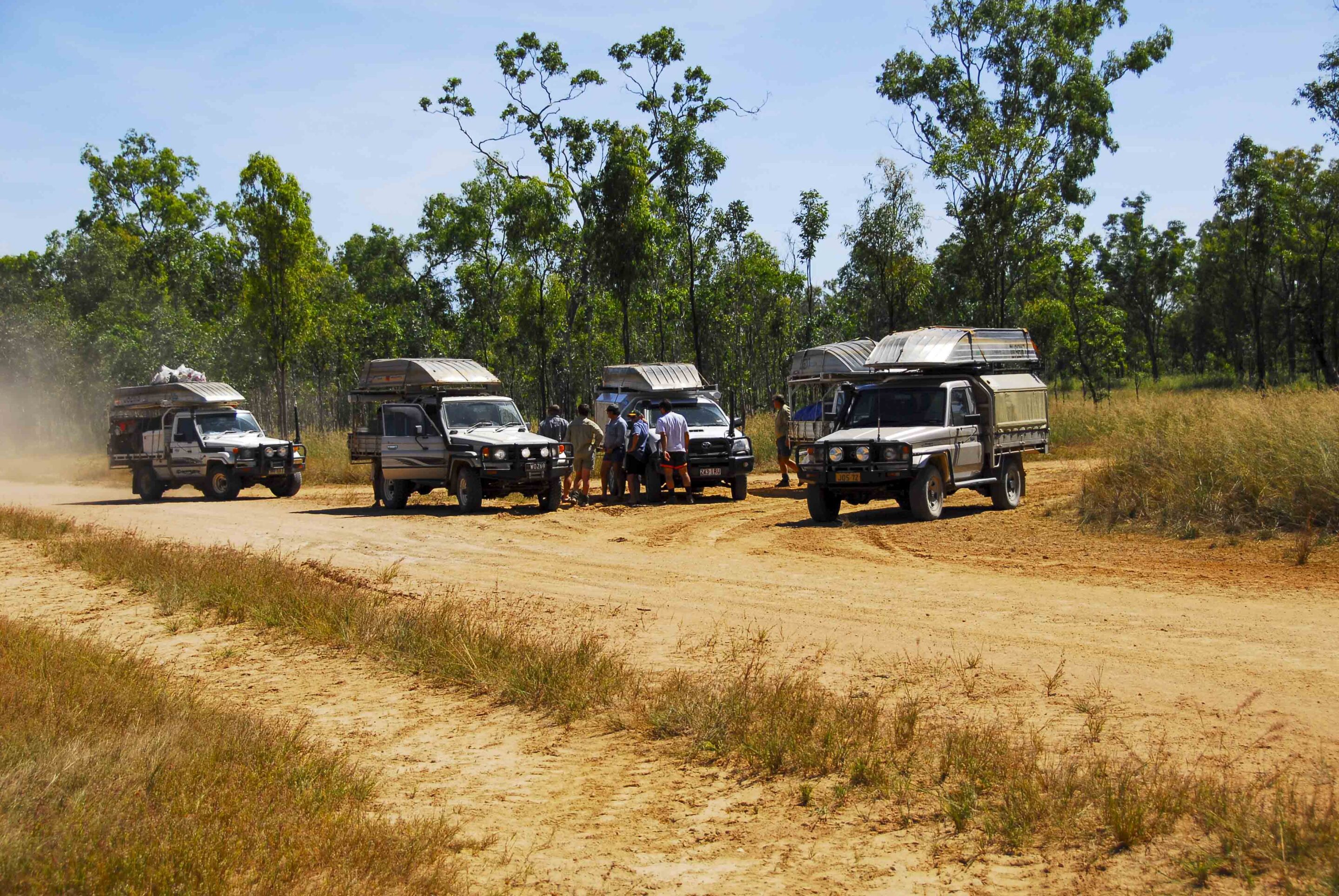
Bush tracks often hide exposed roots, rocks and even fallen trees that are covered in sand or bulldust. Keep an eye open for them or it may mean suspension damage or a tyre change, an unpleasant job in bulldust.
Take care on dirt and gravel roads where gravel is piled up in the centre. Be wary when changing lanes’ at speed because the vehicle will fish-tail and roll, which is almost guaranteed if you are towing a trailer/van when it crosses the centre pile. Many such roll-overs happen on the Cape’s Peninsula Developmental Road, with most drivers having no clue what happened. The same occurs when driving on low-pressure tyres and taking corners at 100km/h, and the rubber rolls off the rim. Game over…
Getting bogged
Bogs happen when you suddenly hit a soft patch or run out of engine power to get you over the top of a dune or across a long stretch of heavy sand.
The first thing to do is to stop, because spinning wheels dig down deeper and can damage your vehicle’s gearbox. If there is another vehicle with you it’s an easy escape with a snatch strap, while a winch hooked up with a sand anchor (or buried tyre) is another method when stuck on a beach or dune. On tree-lined bush tracks it’s simple to hook the winch cable to a tree, though in the damp parts and after the wet season, small trees will pull out from the ground.
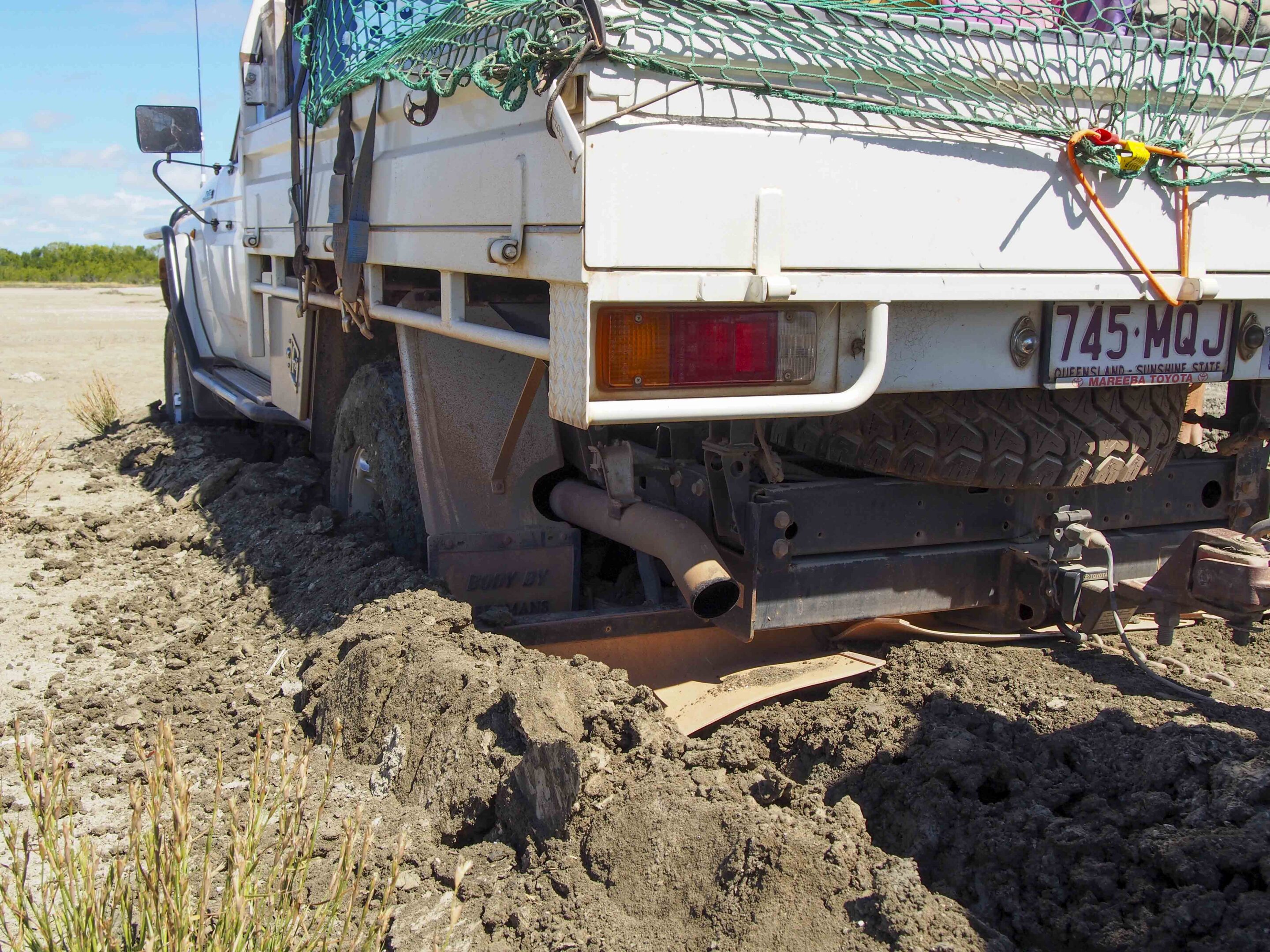
One of the easiest means of un-bogging a vehicle from sand is with recovery boards. However, don’t forget to carry a long-handled shovel in case some digging about the wheels is required. Avoid short-handled and survival shovels if you want to avoid a bad back.
If you head off the dirt roads and onto monsoon forest tracks on the Cape, or pretty much anywhere in the tropical north, you will encounter conditions as described. Plan for them because it can all go wrong in a split second…
Necessary equipment
Carry recovery gear when heading into the wilderness. It starts with a reliable air compressor; buy the best you can afford, not a $30 special as it won’t pump large 4×4 tyres up. You will need a tyre gauge and deflator set.
A winch is handy, but you can spend a lifetime in the bush and never use one. I carry a 50-year-old Tirfor hand winch that has seen some heavy work. Backing the winch is a recovery kit, including an extra 10,000lb breaking strain snatch strap. I carry two and have used both to recover vehicles. What applies to winches applies to MaxTrax recovery boards, but when you do need them they are invaluable. They are not that heavy and are easy to store and carry.
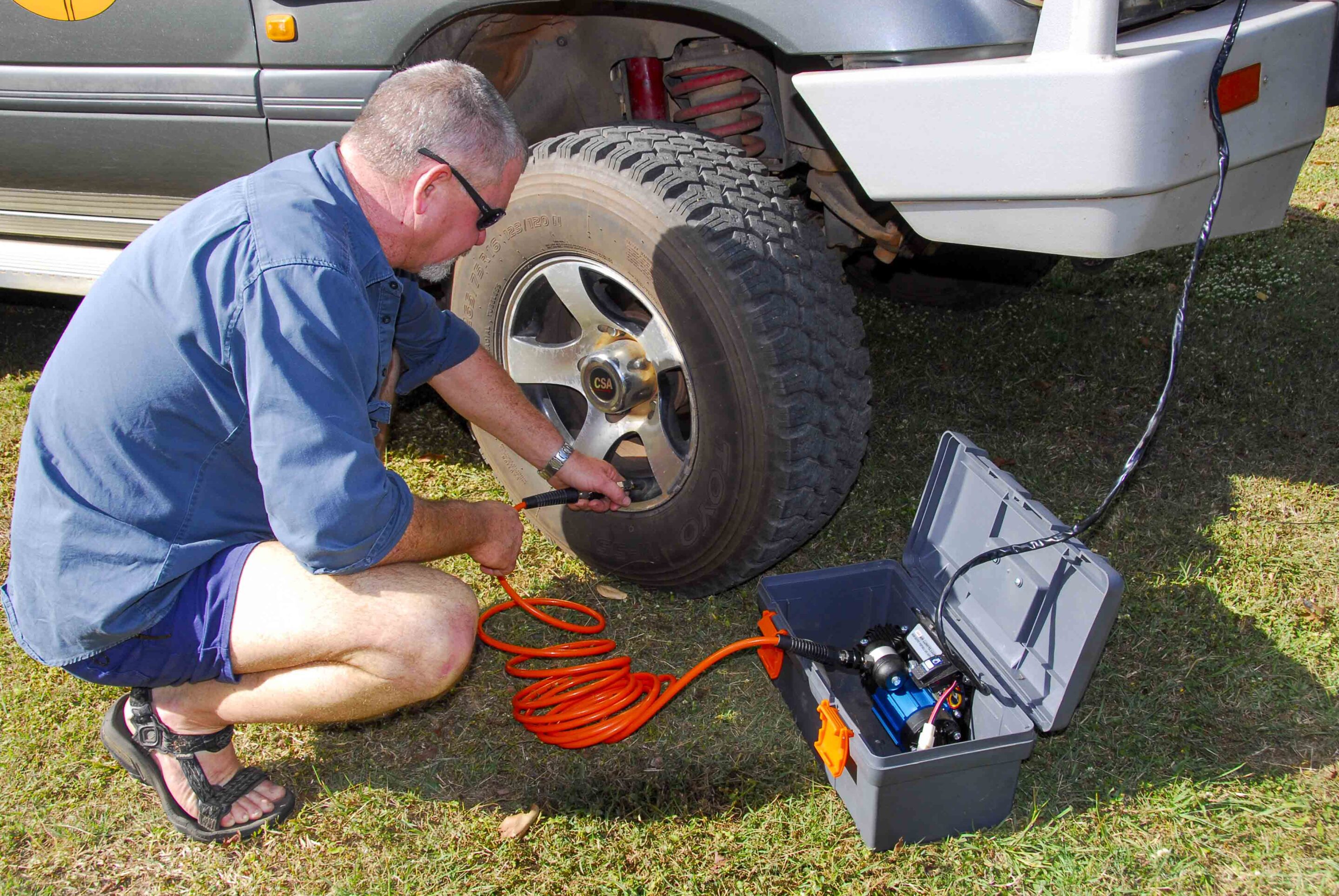
A spare 10t hydraulic jack lives in my tool kit. It’s used for changing tyres instead of the Toyota jack. Have a long-handled shovel. Avoid trench shovels; they are only good for a walk in the scrub with a toilet roll.
A few days back, old mate and I went hunting on a property that has been in limbo for years. The tracks are in disrepair and only used by buggies and quadbikes, with some sections so tight that we had to use an axe to cut small trees down; a good reason to carry an axe or one of those nifty battery-operated chainsaws.
We recommend
-
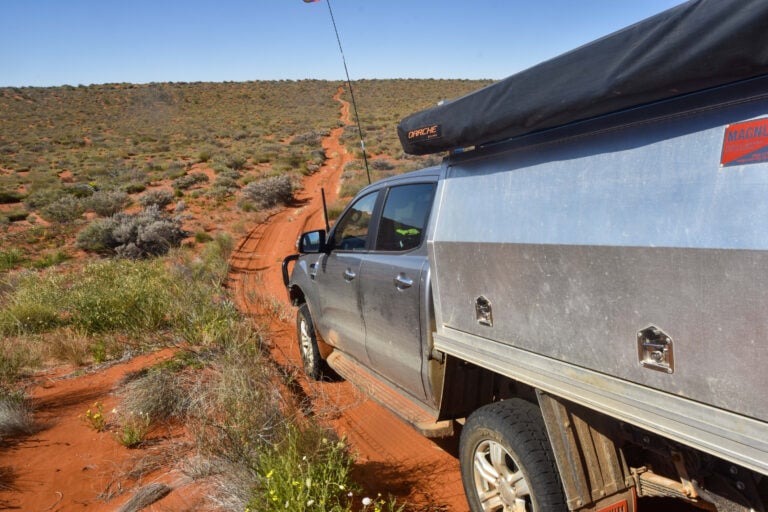 Explore
ExploreTravelling the Madigan Line within the Simpson Desert
The Simpson Desert can be a busy place in peak season, but a run across the northern Madigan Line can provide the isolation many seek in a Red Centre crossing
-
 Explore
ExploreHow to prepare for a remote 4WD off-road trip
Setting up a 4x4 for extended off-grid travel involves careful planning and preparation, to ensure you can handle the unexpected
-
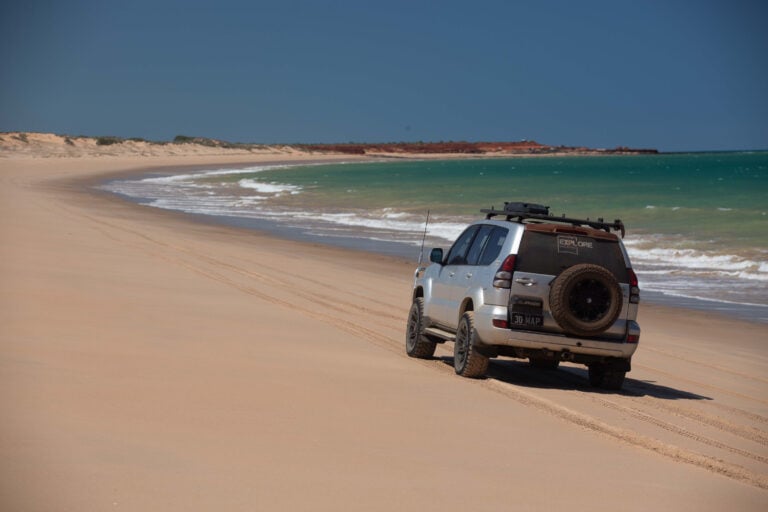 Explore
ExploreExplore: Beaches of Broome
Broome offers plenty for the off-road tourer, especially its fantastic Indian Ocean beaches and coastal campsites along the pristine Dampier Peninsula.

